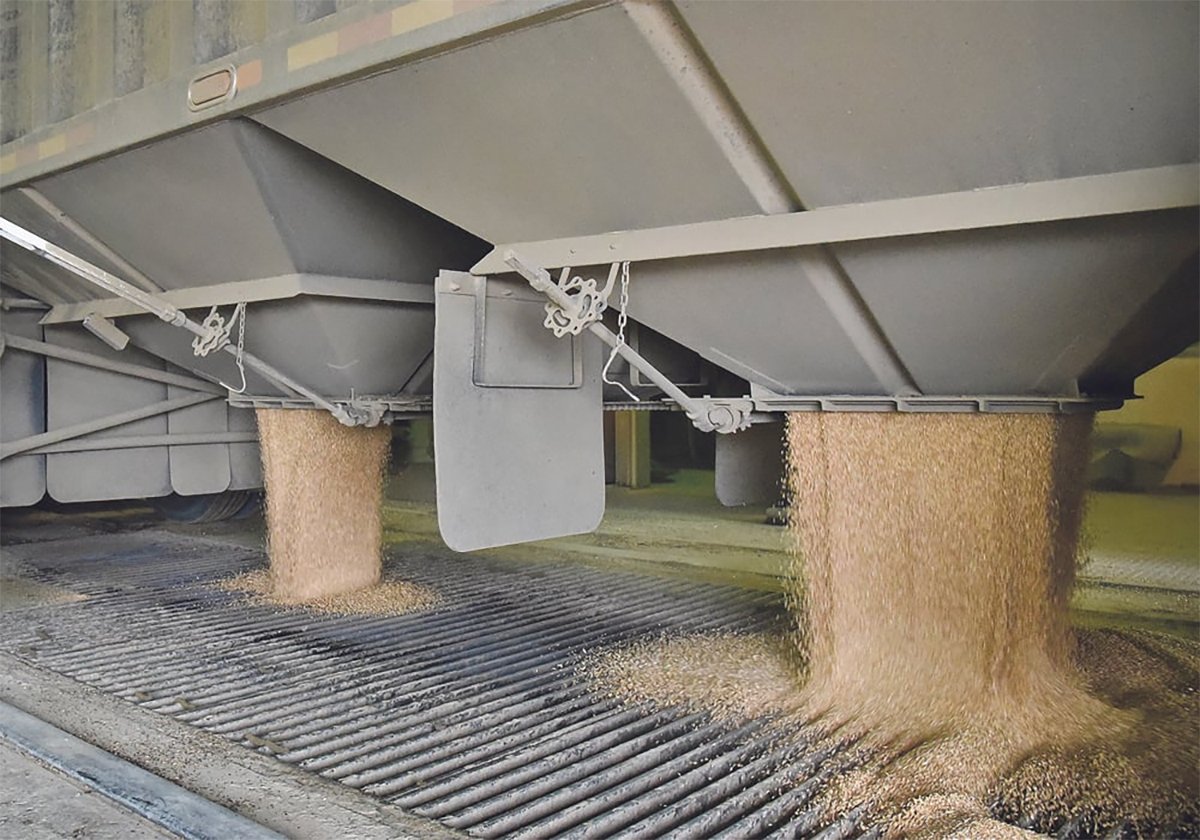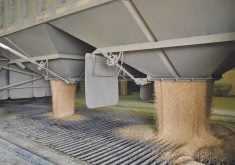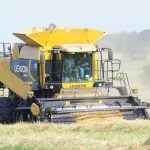Calves with atresia coli have a shrunken or missing colon segment that prevents the passage of manure. Left untreated, the calf’s intestines fill with manure and it dies.
Though calves are born with this condition, researchers disagree on whether it is an inherited trait.
Recent information suggests that palpation of the uterus, a normal management tool in dairy herds during early pregnancy, may contribute to the development of atresia coli.
A paper published in the Bovine Practitioner examined all the variables in the development of atresia coli.
Read Also

Worrisome drop in grain prices
Prices had been softening for most of the previous month, but heading into the Labour Day long weekend, the price drops were startling.
The condition is seen in many cattle breeds, but is a particular problem in dairy animals.
Most calves with the ailment are Holstein-Friesians. This breed appears to be genetically predisposed, though the condition occurs spontaneously in other breeds as well.
Some studies suggest that atresia coli is a simple recessive heritable trait. When family lines have been studied, the incidence seems to follow a pattern that suggests some individuals are carriers of the trait.
Other researchers conclude that atresia coli is not genetic. They point to the sporadic nature of cases and the fact that many breeds are involved in different countries and in unrelated animals. They also note that atresia coli can affect one calf in a set of identical twins and leave the other unaffected.
Cows that undergo surgery for atresia coli don’t have calves with a high incidence of the disease, again suggesting it is not heritable.
Because there is no clear answer on what, if any, role genetics play in the development of atresia coli, researchers have
focused on how the condition develops.
In Holstein-Friesian cattle, the colon is believed to be damaged secondarily to a lack of blood supply to the spiral colon. Fast growth of the colon is also believed to be a predisposing factor.
Holstein-Friesian cows have been selected for long intestines because they need to digest large amounts of concentrates to sustain their high milk production. Longer intestines put them at a higher risk for vasculature compromise during fetal development of the colon.
The time at which the spiral colon is forming coincides with the time that cows are palpated to confirm pregnancy. It is possible the fetal intestinal vasculature may be damaged during this procedure.
It was originally thought that the high incidence of atresia coli in Holstein-Friesian calves could be blamed entirely on palpation.
However, other dairy cattle breeds that are palpated at this early stage have a dramatically lower incidence of atresia coli. Holstein-Friesian cattle seem to have a predilection for this anomaly, which also makes them more sensitive to palpation injury.
Surgery for atresia coli has a poor success rate. Even if calves live, their ability to digest and absorb nutrients is reduced because part of their colon is missing.
As well, their growth rate is slower and their susceptibility to scours increases. Their feces are more fluid because water cannot effectively be absorbed from the colon.
Routine surgical correction of atresia coli is not recommended.














